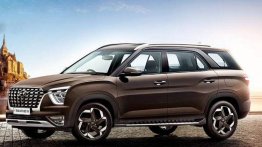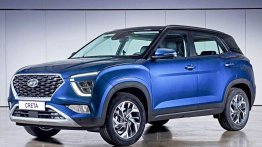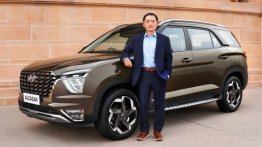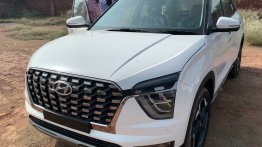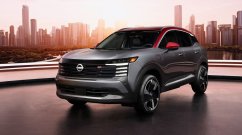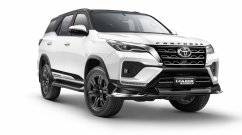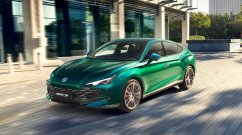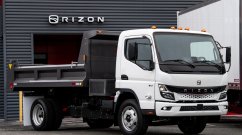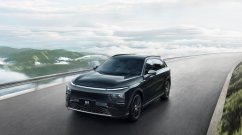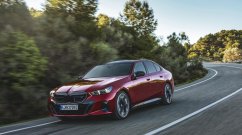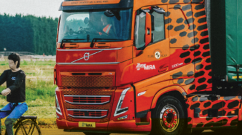 At first, Americans used to build the best cars on the market. Cadillacs, Mustangs, Corvettes ruled the roads. Then, power came in the hands of the Japanese with their Toyotas and Nissans that showed that cars need not be unreliable. Now, modern day threat comes from Koreans – specifically Hyundai/Kia.
At first, Americans used to build the best cars on the market. Cadillacs, Mustangs, Corvettes ruled the roads. Then, power came in the hands of the Japanese with their Toyotas and Nissans that showed that cars need not be unreliable. Now, modern day threat comes from Koreans – specifically Hyundai/Kia.
Hyundai/Kia, now the world's fifth-biggest carmaker in the world, is the envy of global rivals. Its class leading design, oodles of features and backed by affordable prices have made sure that it has given headaches to every single manufacturer in the world. But how did Hyundai get from making the ‘Accident’ to the revolutionary Genesis.
Here are some excerpts from an article from AutoNews explaining Hyundai’s Accent (pun intended):
The Past
When the company started making cars four decades ago, Hyundai used to make do with borrowed designs, engines, suspension and transmission technology. It had a very bad reputation for quality and has received ample jibes for it. It is similar to the treatment handed out by auto enthusiasts to many Chinese cars today.
The Change in Philosophy
The company decided to shed the image of a cheap car manufacturer. Their inspiration was Volkswagen which also used to build volume cars but was always seen as a premium manufacturer. Hyundai wanted their cars to be valued as something like Apple's iPhone, not Samsung's Galaxy.
Plan of action
- Change the design –
Hyundai decided that it no longer would make dingy designs and wanted something aspirational. The company gave a lot of power to the design chief and threw resources at the design department. Hyundai and Kia steered the company with the view that the whole company needed to focus on design rather than cost. Hyundai poached ex-BMW designer Christopher Chapman to head its U.S. design center, while Kia hired Peter Schreyer, a former Volkswagen/Audi designer.
- Improve Quality –
Chairman Chung Mong-koo wanted to improve quality of Hyundai vehicles. The leader used to have regular meetings with the managements and if you're not improving product quality, you're fired at lunch. Quality related decisions started to move at lightning speed. Hyundai also started a round-the-clock "quality situation room," collecting reports of problems from around the world and relaying them to the relevant departments.
- Aggressive comparisons with the rivals –
Before launching the Genesis, the top level management was taken to a secret chamber in the headquarters complex. Inside, they were asked to evaluate the design of the next-generation Genesis premium sedan due to be unveiled late next year. To help them gauge its merits, it was parked alongside competing BMW, Mercedes-Benz and Audi model
Hyundai/Kia started stocking its main local dealerships with premium foreign marquees such as the BMW 5 Series, Mercedes Benz E-Class and Lexus ES350 so consumers could test drive and compare them directly with Hyundai's own models.
- Results –
Despite Hyundai capping its global capacity at close to seven million vehicles for 2012, figures suggest sales in the US alone could reach 700,000 this year. Figures from Hyundai America show a 13 per cent rise in sales for March compared with last year, giving the Korea-based manufacturer an all-time monthly record of 69,728 units.
- Back Home –
Here in India, Hyundai is going through an all-time high. The company has managed to come out with a new model every 6 months out pacing the rivals' product portfolio. The company has presence in almost all segments and most of them raking in good volumes.
The Verna was a huge success for the company, the predecessor model could only make a fraction of the current model's impact. Hyundai's Eon was seen starting slowly but sales have come along nicely into 5-digit figures in 2012. The work in the compact car segment has only started as the next generation i10 (code - BA) and next generation i20 (code - IB) are being secretly developed and tested. Hyundai plans to set up a diesel engine plant very soon to mitigate the threat from rising petrol prices. Fitting diesel engines to the Eon and i10 could take their position to new heights.
Hyundai's yet to step into the MPV and mini SUV segments. The former could come first evident with the showcasing of a concept vehicle at the Delhi Auto Expo. A mini SUV on the HB's underpinnings (an i20 size vehicle for the Brazil market) could help them plug that gap here in India. Hyundai has said time and time again that it wants to play across segments and the launch of the Sonata and the forthcoming Elantra are testimonies to that claim.
The Korean automaker has set its eyes on the kingpin of the Indian Auto sector – Maruti Suzuki - and is catching up to the leader at a breakneck-pace.
Don’t forget to read the full article at AutoNews
